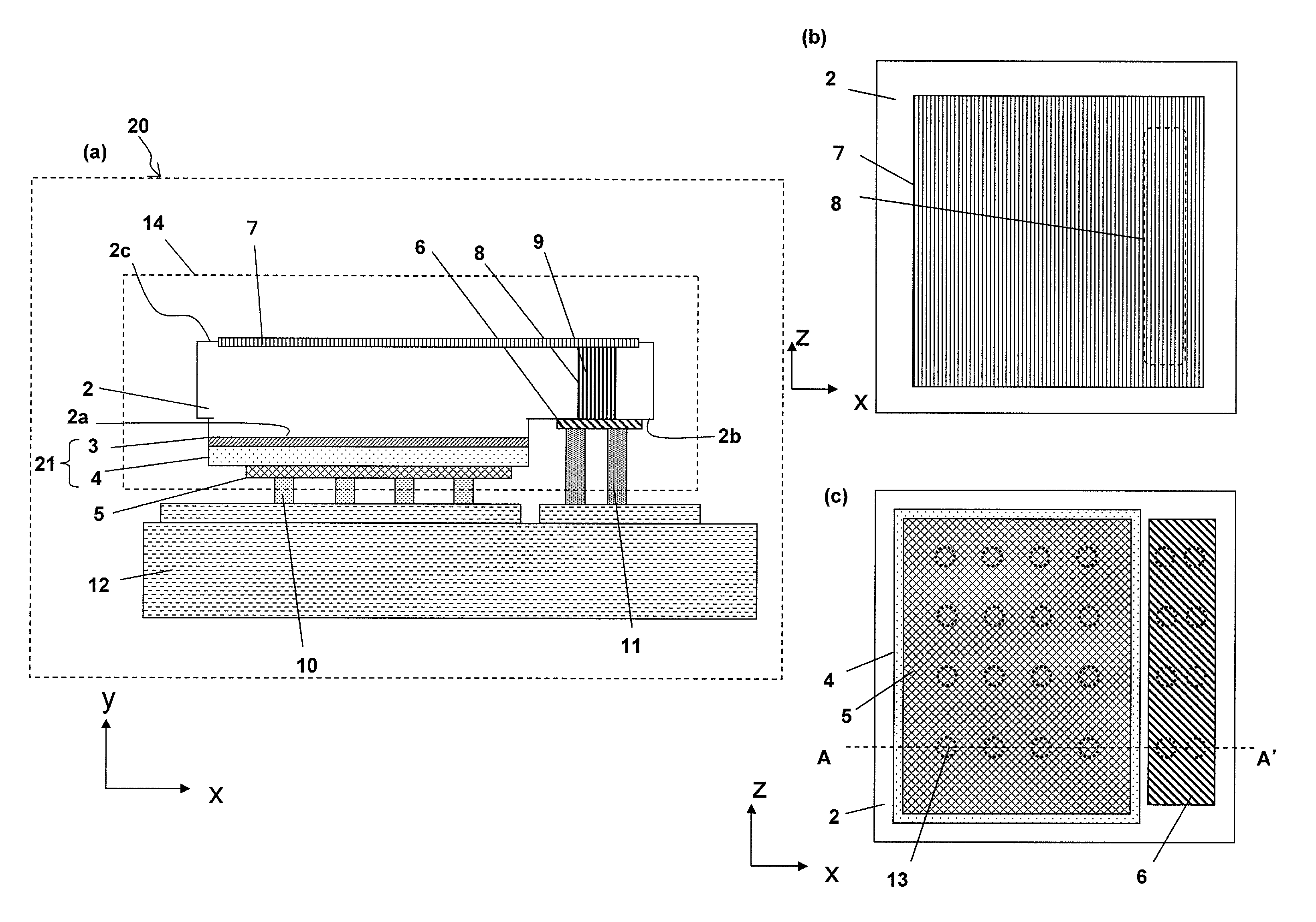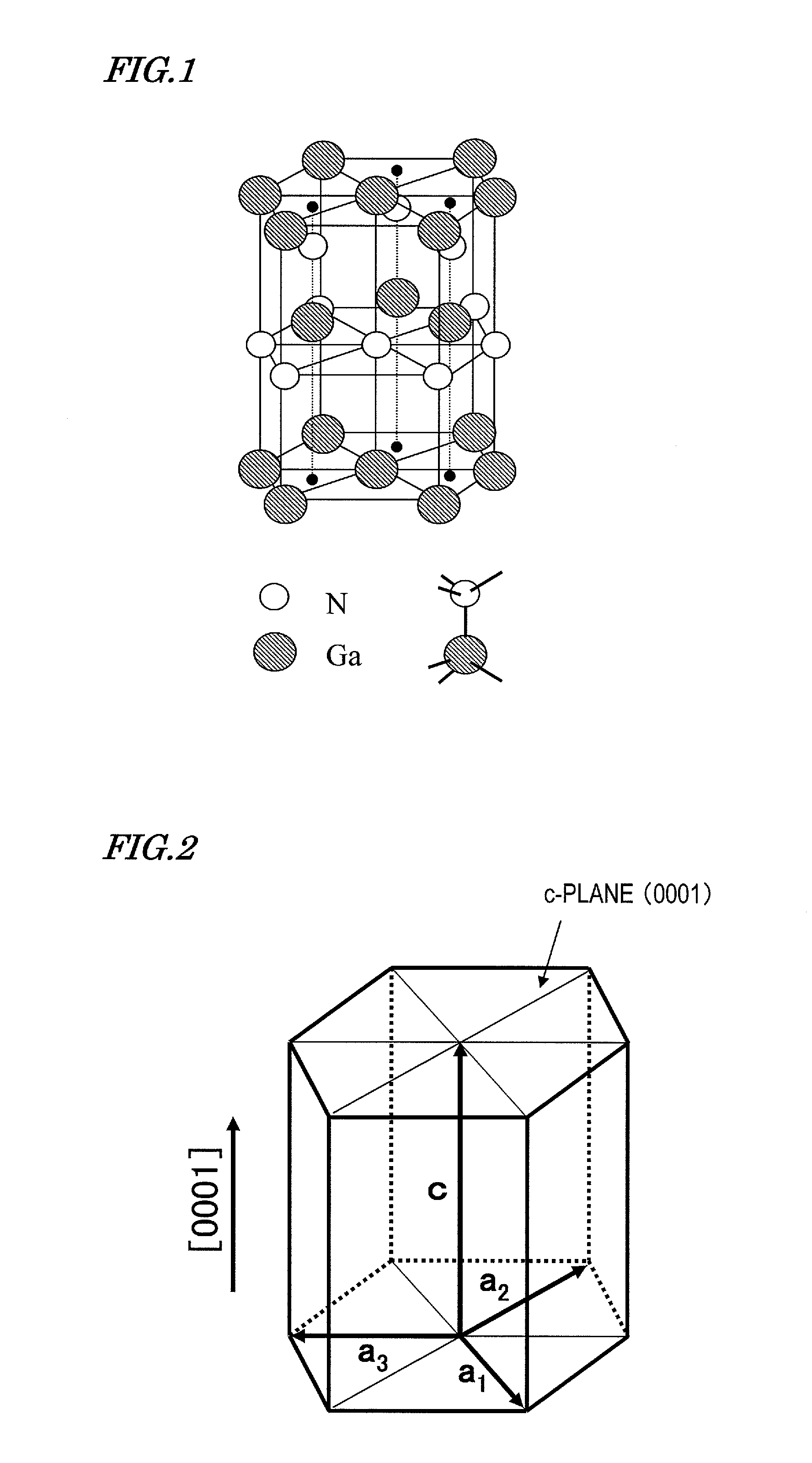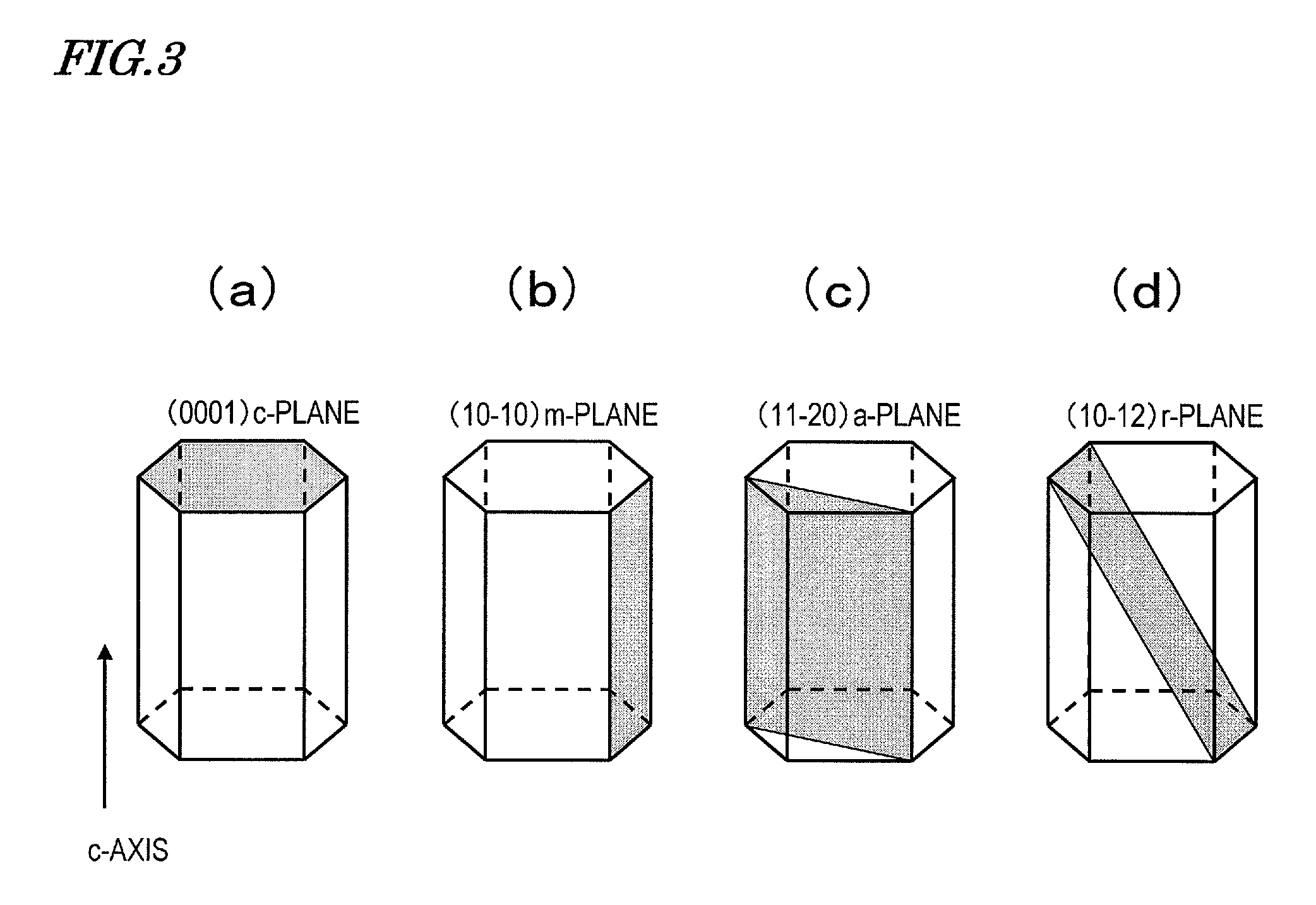Light-emitting diode
- Summary
- Abstract
- Description
- Claims
- Application Information
AI Technical Summary
Benefits of technology
Problems solved by technology
Method used
Image
Examples
embodiment 1
[0060]FIG. 6(a) is a cross-sectional view showing Embodiment 1 of the light-emitting diode device according to the present invention. FIG. 6(b) is a diagram showing a rear surface 1b of an n-type GaN substrate 1 of a light-emitting diode element 14. FIG. 6(c) is a diagram showing a surface of the light-emitting diode element 14 on the principal surface side. In FIGS. 6(a) to 6(c), components which are the same as those of FIG. 4(a) to FIG. 4(c), FIG. 5(a), and FIG. 5(b) are denoted by the same marks.
[0061]As shown in FIG. 6(a), a light-emitting diode device 20 of the present embodiment has a configuration wherein a light-emitting diode element (chip) 14 is mounted on the mounting base 12. The light-emitting diode element 14 is provided on the mounting base 12 via bumps 10, 11. The bump 10 couples a p-electrode 5 of the light-emitting diode element 14 with the mounting base 12. The bump 11 couples an n-type front surface electrode 6 of the light-emitting diode element 14 with the mou...
embodiment 2
[0089]FIG. 9(a) is a cross-sectional view showing Embodiment 2 of the light-emitting diode device according to the present invention. FIG. 9(b) is a diagram showing a rear surface 1b of an n-type GaN substrate 1 shown in FIG. 9(a). FIG. 9(c) is a diagram showing a surface of a light-emitting diode element 14 shown in FIG. 9(a) which is on the principal surface side. In FIGS. 9(a) to 9(c), components which are the same as those of FIGS. 6(a) to 6(c) are denoted by the same marks.
[0090]As shown in FIG. 9(a), in the present embodiment, the +c-plane 8a and the −c-plane 8b appear on the lateral surfaces of the inner walls of the through hole 8. The +c-plane 8a is located at a position closer to the active layer 3 than the −c-plane 8b. As described above, after the heat treatment, the +c-plane exhibits low contact resistance, which is 1 / 10 to about ⅕ of the contact resistance obtained in the case of the m-plane. In this way, the +c-plane is provided on a side where a larger electric curre...
embodiment 3
[0096]FIG. 11(a) is a cross-sectional view showing Embodiment 3 of the light-emitting diode device according to the present invention. FIG. 11(b) is a diagram showing a rear surface 1b of an n-type GaN substrate 1 shown in FIG. 11(a). FIG. 11(c) is a diagram showing a surface of a light-emitting diode element 14 shown in FIG. 11(a) which is on the principal surface side. In FIGS. 11(a) to 11(c), components which are the same as those of FIGS. 6(a) to 6(c) are denoted by the same marks.
[0097]As shown in FIGS. 11(a) to 11(c), in the present embodiment, through holes 8 are provided in a central portion of the chip (a central portion in terms of the x direction). At opposite sides of a region in which the through holes 8 are provided (the opposite sides of the chip in terms of the x direction), the active layer 3 and the p-type conductive layer 4 are positioned. As shown in FIG. 11(b), three through holes 8 are aligned along the z direction. The upper openings of the three through holes...
PUM
 Login to View More
Login to View More Abstract
Description
Claims
Application Information
 Login to View More
Login to View More - R&D
- Intellectual Property
- Life Sciences
- Materials
- Tech Scout
- Unparalleled Data Quality
- Higher Quality Content
- 60% Fewer Hallucinations
Browse by: Latest US Patents, China's latest patents, Technical Efficacy Thesaurus, Application Domain, Technology Topic, Popular Technical Reports.
© 2025 PatSnap. All rights reserved.Legal|Privacy policy|Modern Slavery Act Transparency Statement|Sitemap|About US| Contact US: help@patsnap.com



